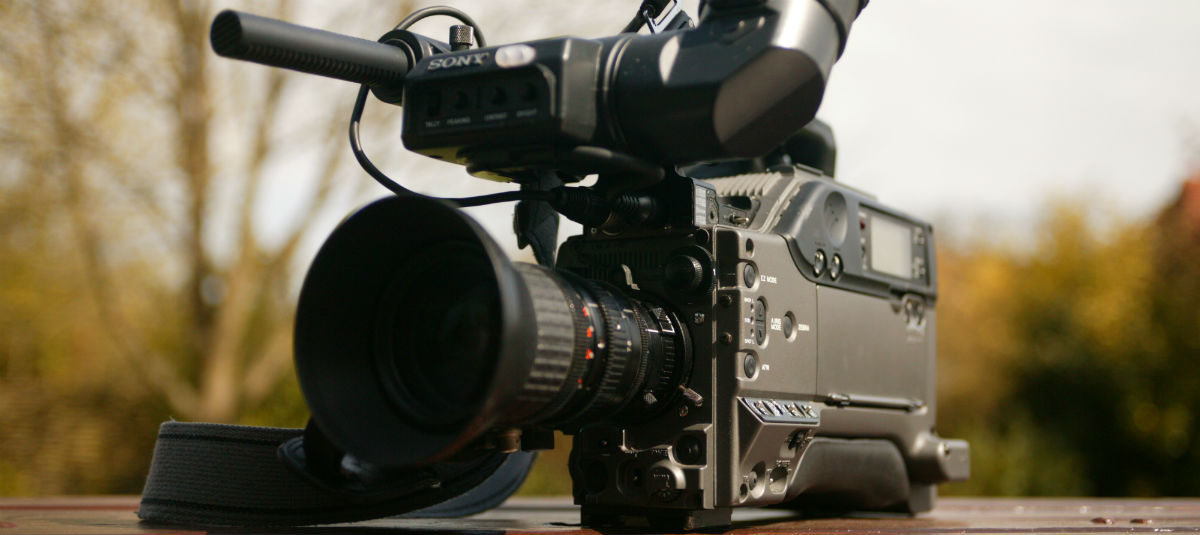5 Media Training Tips to Nail a PR Interview

Request a Demo
Learn how top nonprofits use Classy to power their fundraising.
Media attention can be a game changer for your social impact organization. From the local cable station running a feature on your event, to hosting an “ask me anything” on Facebook Live, there are many ways your organization can take advantage of on-camera interviews to raise awareness for your cause.
However, unless you’re a regular resident of the spotlight, on-camera interviews can feel downright intimidating—especially when it’s up to you to speak on behalf of your staff. Anxiety and lack of preparation can cause us to trip up, appear tense or unprofessional, or even misspeak. These situations can tarnish not only your personal brand and reputation, but also the credibility of your organization.
Luckily, there are a few media training tips you can use to prepare for an on-camera interview and put your best foot forward.
Our marketing team met with Julie Reynolds of Uncommon Marketing to prepare for the interviews we conducted at the Collaborative. Here are her top tips and tricks that will help you complete a professional, relaxed interview that reflects positively on you and your organization.
1. Do Some Prep Work
Before your interview, it’s important to first understand the language you’d like to use when speaking about your organization. There are likely several key phrases used throughout your website and social pages that are central to the way your work is defined. To present a consistent message, identify key phrases ahead of time that you want to plug for basic questions.
These might include:
- Tell us a little bit about yourself and your position.
- How did your organization begin?
- What’s your organization’s mission?
- Who are your beneficiaries?
- How would you describe your programs?
Also consider any main points you want to be sure to mention in your interview before it’s conducted. Check in across departments to see if there’s any time-sensitive information that they want the public to know about, such as an upcoming campaign or event.
Key facts and statistics about your cause and impact will also help you sound informed and professional. While there’s no need to memorize a list of numbers, it can’t hurt to identify one or two figures that will help you speak to the magnitude of the problem your organization works to solve.
When you lock in a standard protocol for frequently asked questions, you’ll be miles ahead in your interview preparation. This important step will save you any unnecessary time or anxiety in the moment and make your responses second nature.
2. Know Your Interview Dos and Don’ts
If you’ve never completed an on-camera interview before, a few media training tips might strike you as a little odd. Julie recommends understanding these dos and don’ts to become more comfortable with what to expect.
Do:
- Feel free to make small talk before an interview, but remember you might be quoted for what you say even outside the recording.
- A few shoulder rolls and shake out any tension in your body before you sit down.
- Remember that you’re in control. Ask for what you need to be successful, whether that’s a glass of water or a moment to collect your thoughts.
- Lead with the most important bit of information in your response and then follow up with any supplementary details.
- Smile and show enthusiasm
- Thank the interviewer for the opportunity and their time.
- Incorporate the question within the start of your answer.
- “What’s your favorite color?” leads to “My favorite color is….”
Don’t:
- Fidget, but feel free to use your hands.
- Use technical jargon.
- Say,“no comment.”
- Speculate.
- Answer something you don’t know.
- Look directly at the camera.
- Maintain normal eye contact with your interviewer.
3. Maintain Control of the Conversation
In an on-camera interview situation, you can essentially consider yourself “the talent.” You might not have a trailer whose door has your name in a star, but you’ve still taken time out of your busy schedule to provide the interviewer with valuable information for their report or story. As such, there are a few media training tips you can use to make sure the interview makes the best use of your time and serves your organization.
If you feel like the interviewer is getting off-topic or moving into an area you’d rather not discuss, simply say,
“I can’t answer that, but what I do know is…”
“That’s incorrect. Let me explain further.”
“Yes, but more importantly…”
You can also use key phrases to emphasize points you really want to get across:
“What I really want to leave the audience with is…”
“If there’s one thing I really want to say, it is…”
“The most important thing for everyone to know is…”
If the interviewer asks you several questions at once,
“You’ve given me a lot to address. Let me start with…”
“Does that answer the first question? Could you please restate the second?”
And if you do trip up or feel like you’ve stated something incorrectly,
“I’m sorry, I misspoke. Let me rephrase that.”
“One moment. Let me start over.”
“I want to make sure I’m answering this correctly. Can you please repeat your question?”
If you feel unable to answer a question or caught off-guard, here’s what Julie recommends:
“All organizations should establish protocols for media interactions that identify who is authorized to speak to the media. Typically, authorized spokespeople are the CEO, Executive Director, or other senior executives, as well as the communications lead.
If you are not one of the authorized spokespeople, politely refer the reporter to the correct contact. Remember that nothing is off the record, so keep your interaction to a minimum. If you are the authorized spokesperson and are not prepared to answer the questions, politely say that you’re not able to answer their questions right now. If appropriate, offer to speak with them later so that you have time to do your research.”
4. Be Aware of How Your Body Language Impacts Your Presence
You might not think twice about crossing your arms or leaning back in your chair, but certain body positions can cause you to seem closed off or uncomfortable. To give off a warm and relaxed disposition, Julie recommends that you:
- Sit up straight
- Smile
- Lean forward slightly
She additionally warns that you may feel a bit awkward when you realize how close together people actually sit during an on-camera interview. Try to acknowledge this lightheartedly and just know that this is something the interviewer is very familiar with.
5. Take a Deep Breath
Last, but certainly not least: if you’re the nervous type, don’t forget to de-stress before your interview and try to relax. Here are a few stress-mitigating practices you can follow in the time leading up to the interview to help you relax before you get on camera.
11 Stress-Busting Tips for the Busiest Time of Year
At the end of the day, Julie advises that the most important thing you can do to be interview-ready is your homework.
“Research the reporter, the outlet, and the audience. Then challenge yourself to think like the reporter. Given what you know, what questions do you think he or she is likely to ask? What angle might the reporter take with your organization? Are there any difficult questions you can anticipate? A reporter’s job is to answer the question ‘So what?’ for their particular audience. Knowing that, figure out what you want to say and practice, practice, practice.”
When you take the time to mentally prepare for an on-camera interview, you set yourself up to confidently represent yourself and your organization. This preparation can even prepare you for any on-the-spot important conversations you may have in your professional career, such as at networking events.
Ready for your close up? Check out The Ultimate Guide to PR for Nonprofits below.

The Ultimate Guide to PR for Nonprofits
Subscribe to the Classy Blog
Get the latest fundraising tips, trends, and ideas in your inbox.
Thank you for subscribing
You signed up for emails from Classy
Request a Demo
Learn how top nonprofits use Classy to power their fundraising.
 Explore Classy.org
Explore Classy.org 

